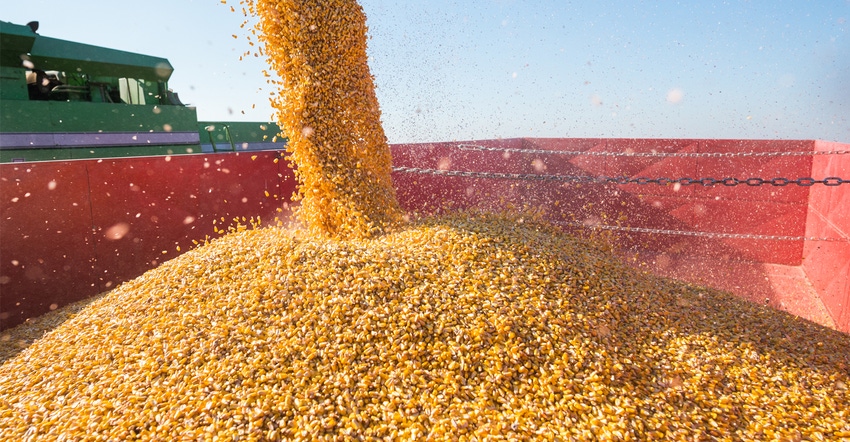
Baseball players know to keep their eye on the ball. For farmers marketing 2017 corn, success may hinge on knowing which ball to follow.
The demand boom fueled by expansion of the ethanol industry was the name of the game for more than a decade. It wasn’t that long ago that ethanol critics were wringing their hands about a world facing starvation. The food-vs.-fuel debate was over quickly. Now farmers wonder how they’ll get rid of all the corn filling up bins this fall.
Markets driven by demand like the one that helped prices rise to record levels are rare. Corn only had two in the past five decades. Neither lasted long.
The first came in the 1970s, when the world market opened for U.S. crop exports. In a matter of just a couple of years, the percentage of total corn demand represented by exports more than doubled. Countries wanting corn came to the U.S., which controlled nearly half of global production.
Politics, weather and the market ended the first boom. The embargo on corn sales to the Former Soviet Union, farm programs that slashed acres, and a series of droughts persuaded big importers like Japan they needed to diversity their supply chain. Rallies to record prices — near $4 in 1974 and 1980, and then $5.545 in 1996 — provided plenty of motivation for farmers around the world to learn how to grow corn. By the time prices surged to $8.4375 in the wake of the 2012 drought, the end was in sight for the market to shift back to a focus on supply.
Forty years ago Brazil exported no corn. In 2016, it accounted for 17.5% of world coarse grain trade. Russia likewise switched from importing corn to exporting it, capturing nearly 20% of the market for feed grains during the last marketing year.
Today’s markets are all about supply — too much of it. Demand is good overall, but no segment of usage is growing much, if at all.
Ethanol’s glory days are past. The biofuel industry’s demand for 2016 crop corn turned out better than expected, thanks to cheap gasoline that encouraged driving, along with better exports. But without sky-high gasoline prices or an effective renewable fuels mandate, ethanol usage is growing modestly at best.
Livestock will also eat more corn. Numbers are up as herds rebuild following a decade of problems including disease and drought. But less corn and more byproducts, including dried distillers grain with solubles, work into rations these days.
Exports of 2016 crop corn were a pleasant surprise. They ended near the best levels reached since the export boom began. But the top of that range hasn’t grown in nearly 40 years. A changing market structure doesn’t mean growers should ignore demand, but it does change what to watch for.
To see what affected market moves after harvest, we examined monthly supply-and-demand reports put out by USDA. From 1990 to 2005, storage gains for corn reflected the changes you might expect in these reports. In years with the best storage gains, exports were better than initially expected at harvest. The government’s forecast of leftover supplies at the end of the marketing year also fell in years with better gains.
The peak years of the ethanol demand boom from 2006 to 2013 demonstrated a completely different pattern. Storage gains were best in years when USDA raised its forecast for ending stocks and lowered its projection for both total usage and demand from ethanol plants.
At first glance that doesn’t make sense: Prices rose when demand went down and stocks went up?
There was a method to the market’s madness. Remember, when ethanol drove markets, some believed the U.S. would run out of corn. So prices rose to ration demand and extend supplies until the next crop came in.
With supplies burdensome, increased demand againis important to whittle away at the surplus. USDA reports that reflect rising feed and perhaps ethanol usage are crucial to helping prices recover. Exports would help, but sales may stay strong only if problems emerge elsewhere around the world.
Decision Time: Risk Management is independently produced by Farm Futures and brought to you through the support of Case IH.
About the Author(s)
You May Also Like




